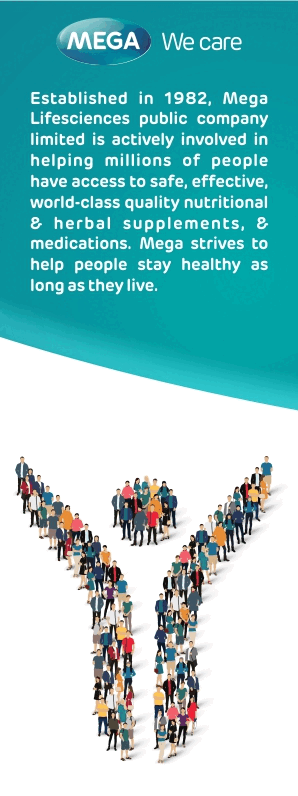THE EFFECTIVE EVALUATION OF DIGITAL REPRODUCTIVE HEALTH LITERACY INTERVENTION ON SERVICE COMPETENCIES OF HEALTH PROVIDERS IN ADOLESCENT AND YOUTH HEALTH CLINICS IN THAILAND
DOI:
https://doi.org/10.69614/ejrh.v15i4.727Keywords:
reproductive health, health literacy, digital literacy, adolescent and youth, competencyAbstract
INTRODUCTION: The global reproductive health remains concerning due to the insufficient knowledge and understanding among healthcare providers. This knowledge gap also extends to their limited ability to utilize technology for delivering services. The purpose of this research was to find an intervention for Digital Reproductive Health Literacy (DRHL) to enhance service competencies.
METHODS: The randomized controlled trials (RCTs) were conducted January to July 2023. The 60 participants aged 20 to 60 working in adolescent and youth clinics were selected through random assignment and 30 allocated to 12 hours intervention in 6 modules, consisted of knowledge, digital skills, communication skills, provider attitudes, digital-based services, and networking skills. 30 participants were assigned in the control group. The data were collected using DRHL scale with reliability of 0.97, and Discriminant power of 0.2 to 0.8. Data were analyzed using MANCOVA.
RESULTS: The results showed that health providers in the experimental group had significantly a higher mean score of DRHL (Mean = 90.83, 80.60) and competencies (Mean 69.60, 62.00) than control group at after treatment and follow up (Mean = 93.13, 81.13; Mean= 70.57, 62.97, p<.01). Specially, in the experimental group indicted that mean score of the DRHL and competencies by domains at follow-up were higher than the mean score at before treatment (p < .05).
CONCLUSION: Human resources specialists or administrators could apply DRHL intervention to promote DRHL and competencies for health providers working in adolescent and youth health clinics.
References
2. World Health Organization. WHO recommendations on adolescent sexual and reproductive health and rights. 2018;
3. Aroonpakmongkol P, Prutipinyo C, Aimyong N. A Regional Health Promotion Center’s Personnel Core Competencies under the Department of Health, Ministry of Public Health. Public Health Policy and Laws Journal. 2023;9(1):35-47.
4. World Health Organization. Trends in maternal mortality 2000 to 2017: estimates by WHO, UNICEF, UNFPA, World Bank Group and the United Nations Population Division. 2019;
5. Department of Health. The report presents the findings of an analysis conducted to assess the current live birth rate among women aged 15-19 years. 2021. https://rh.anamai.moph.go.th/web-upload/7x027006c2abe84e89b5c-85b44a692da94/tinymce/kpi64/1_14/1_14_1-1.pdf.
6. Phromprapat P. The Development of Health Services Model for Non-Certified YFHS Hospitals. Journal of Health Education. 2018;41(2):128-140.
7. Sukrat BS, Kittipong Promprapat, Prakaidao. The situation of teen pregnancy, Guidelines for caring for adolescent mothers. 1994.
8. Narkarat P, Taneepanichskul S, Kumar R, Somrongthong R. Effects of mobile health education on sexual and reproductive health information among female school-going adolescents of rural Thailand. F1000Research. 2021;10doi:10.12688/f1000research.53007.1
9. Sukrat B. Estimation of the Adolescent Pregnancy Rate in Thailand 2008-2013. Mahidol University 2014.
10. World Health Organization. Towards adulthood: exploring the sexual and reproductive health of adolescents in South Asia. World Health Organization; 2003.
11. World Health Organization. Adolescent Health in the South East. Asia Region. https://www.who.int/southeastasia/health-topics/adolescent-health
12. Panichkriangkrai W, Topothai C, Saengruang N, Thammatach-Aree J, Tangcharoensathien V. Universal access to sexual and reproductive health services in Thailand: achievements and challenges. Sexual and Reproductive Health Matters. 2020;28(2):1805842. doi:10.1080/26410397.2020.1805842
13. ETDA. Digital Global Overview Thailand. 2021. 15 December 2021. https://www.etda.or.th/th/pr-news/ETDA-released-IUB-2021.aspx
14. World Health Organization. Strategic directions for improving adolescent health in South-East Asia Region. 2011.
15. Intarakamhang U. Creating and developing of Thailand health literacy scales. 2017. Health Education Division, Department of Health Service Support, Ministry of Public Health.
16. Zhang XD, Kelly-Hanku A, Chai JJ, Luo J, Temmerman M, Luchters S. Sexual and reproductive health risks amongst female adolescents who use amphetamine-type stimulants and sell sex: A qualitative inquiry in Yunnan, China. Article. Harm Reduct J. 2015;12(1)34. doi:10.1186/s12954-015-0065-y
17. Creswell JW. Revisiting mixed methods and advancing scientific practices. 2015;
18. Bandura A. Social cognitive theory goes global. The psychologist. 2009;
19. Cooper K. Effective competency modeling & reporting: a step-by-step guide for improving individual & organizational performance. Amacom Books; 2000.
20. Sørensen K, Van den Broucke S, Fullam J, et al. Health literacy and public health: a systematic review and integration of definitions and models. BMC public health. 2012;12(1):1-13.
21. Panayides P. Coefficient alpha: interpret with caution. Europe’s Journal of Psychology. 2013;9(4)doi:10.5964/ejop.v9i4.653
22. Huang K-Y, Kumar M, Cheng S, Urcuyo AE, Macharia P. Applying technology to promote sexual and reproductive health and prevent gender based violence for adolescents in low and middle-income countries: digital health strategies synthesis from an umbrella review. BMC health services research. 2022;22(1):1-27. doi:10.1186/s12913-022-08673-0
23. Organization WH. Youth-centred digital health interventions: a framework for planning, developing and implementing solutions with and for young people. 2020;
24. Organization WH. WHO guideline: recommendations on digital interventions for health system strengthening: web supplement 2: summary of findings and GRADE tables. 2019.
25. Health Do. Principle of Health Literacy. vol 1. Department of Health, Ministry of Public Health; 2018.



